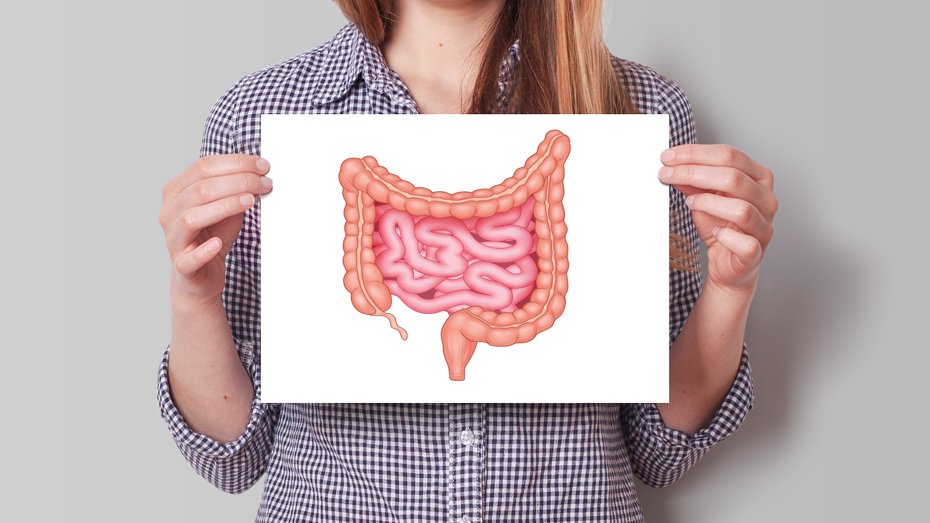
In this article you will find a good start on your learning about the bowel with a summary of the function of the digestive system, the organs involved and its neurological control.
What is the bowel and how does it work?
The function of the digestive system is to take food into the body and to get rid of waste. The bowel is where the waste products of eating are stored until they are emptied from the body in the form of a bowel movement (stool/feces/poo).
Food and liquids entering the body are broken down into smaller pieces before entering the bowel, to reach a size where the body can either absorb and/or move the nutrients where needed. It is through a wave-like movement termed peristalsis, which muscles in the bowel move the content forward. The remaining parts, i.e. the waste, that the body does not need from the food we eat becomes feces.
The normal transit time through the colon (i.e. from mouth to anus) is around 1–3 days. The variation between transit times is due to each individual, their diet, and their lifestyle.

A schematic picture showing what we eat and drink from mouth to bowel and out from the body
What are the different functions of the bowels?
Stomach
- Food is digested (broken down) after being chewed in the mouth with the help of gastric acid and digestive enzymes. Moves digested food to the small bowel.
Small intestine (bowel)
- The region between the stomach and the large bowel. Consists of several parts. The function is continuous breakdown and absorption of nutrition from the food we eat. Moves digested food to the large bowel.
Large intestine (bowel)
- This is the last part of the bowel and consists of several units, where the sigmoid colon, rectum, and anus are the last ones. The main function is to absorb water. Digested waste products become feces and exit the body through the anus.
Pelvic floor
Both men and women have pelvic floor muscles. This is a funnel-shaped structure of different muscles and connective tissue beneath the pelvis cavity. The pelvic floor has two gaps to allow us to pee and defecate - one ‘hole’ allow the urethra to run through, and the other ‘hole’ allows the anal canal to pass. In females, there is a third ‘hole’ for the vagina. The strength of the pelvic floor muscles may weaken with age, hormones, other lifestyle factors, and injury.
The muscles in the pelvic floor have several functions:
- Support internal organs within the pelvic cavity. E.g. Bladder, bowel, and uterus.
- The muscles can tighten under voluntary control to offer resistance to increased pressure inside the pelvis and abdomen. E.g. coughing or lifting a heavy object.
- Bladder & Bowel continence. As muscle groups work in opposition; in a neurologically intact individual, the pelvic floor muscles relax to allow the passage of feces. The rectum and the urethra each have a sphincter action (relaxation) to pee and empty the bowel.
Neurological control
The Central Nervous System (CNS) consists of the brain and spinal cord. The Peripheral Nervous System (PNS) refers to all other nerves in our body besides the CNS.
The PNS is further divided into 2 systems:
- Autonomic Nervous System
- Somatic Nervous System
The Autonomic Nervous System deals with functions in our body that are not under voluntary control. E.g. functions in our heart, liver, and bowel. The Autonomic Nervous System can be further divided into 2 more systems:
- Sympathetic Nervous System
- Parasympathetic Nervous System
*The Sympathetic Nervous System is activated when we need a ‘fight-or-flight' response, eg, when we are exposed to great amounts of stress or encounter danger. Stress and busy lifestyles often overload our sympathetic nervous system, contributing to digestive issues.
*The Parasympathetic Nervous System is the opposite of the sympathetic nervous system. This is the body’s ‘rest-and-digest' state. We have some voluntary control over this system, eg; urination and defecation.
The Somatic Nervous System deals with functions that are under voluntary control – nerves to our body’s will-controlled muscles, to our skin, and sensory organs.
Some textbooks consider the autonomic Nervous system has a third system: Enteric Nervous System. Nerves to/from the bowel. Is also called `a second brain’ and can function on its own or together with the sympathetic and parasympathetic nervous system.
Please see the figures for an easier understanding of the CNS and PNS.

Schematic picture of the central nervous system (CNS) to the left and the peripheral nervous system (PNS) to the right.
Thoughts and emotions triggered by stress can have an effect on your stomach and bowels, and the opposite can also happen; what goes on in your gut can cause stress and long-term upset. Chronic constipation, diarrhea, and other types of bowel conditions may trigger anxiety, causing a vicious circle of stress.

Three nerves are important for controlling the function of the bladder and bowel. The table below explains the function of the nerves and their position in the spinal cord.

The nerves involved in bladder and bowel control are the hypogastric, pelvic, and pudendal nerves.